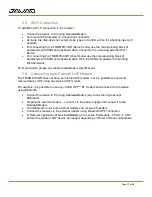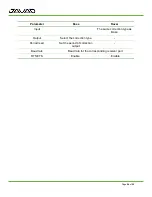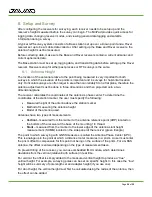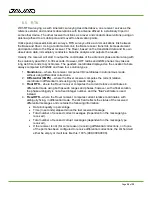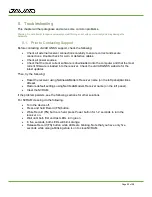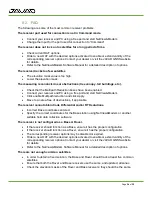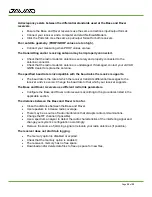
Page
30
of
35
6.5. RTK
With RTK surveying, as with kinematic surveying described above, one receiver serves as the
reference station and conducts observations with its antenna affixed to a stationary tripod or
some other device. The other receiver functions as a rover and conducts observations (using an
antenna) affixed to a mobile pole and moved to observation points.
Unlike post-processed kinematic surveys, RTK surveys utilize a communications link between
the Base and Rover. Using a radio modem link, the Base receiver transmits its measurement
and location data to the Rover receiver. The Rover, based on the transmitted data and its own
observation data, immediately conducts a baseline analysis and outputs the results.
Usually, the receiver will start to output the coordinates of the antenna’s phase center along with
the solution type within 10–30 seconds. However, UHF radios and GSM phones may take as
long as 60 seconds to synchronize. The geodetic coordinates displayed on the Location tab are
always computed in WGS84 and have four solution types.
1.
Standalone
– where the receiver computes 3D coordinates in autonomous mode
without using differential corrections.
2.
Differential (DGPS)
– where the Rover receiver computes the current relative
coordinate in differential mode using only pseudo ranges.
3.
Float RTK
– where the Rover receiver computes the current relative coordinates in
differential mode using both pseudo ranges and phases; however, with a float solution,
the phase ambiguity is not a fixed integer number, and the “float” estimate is used
instead.
4.
Fixed RTK
– where the Rover receiver computes current relative coordinates, with
ambiguity fixing, in differential mode. The LQ field reflects the status of the received
differential messages and contains the following information:
•
Data link quality in percentage.
•
Time (in seconds) elapsed since the last received message.
•
Total number of received correct messages (dependent on the message type
received).
•
Total number of received corrupt messages (dependent on the message type
received).
•
If the receiver is not (for some reason) receiving differential corrections, or if none
of the ports has been configured to receive differential corrections, the LQ field will
either be empty or it will look like this: 100% (999,0000,0000).


